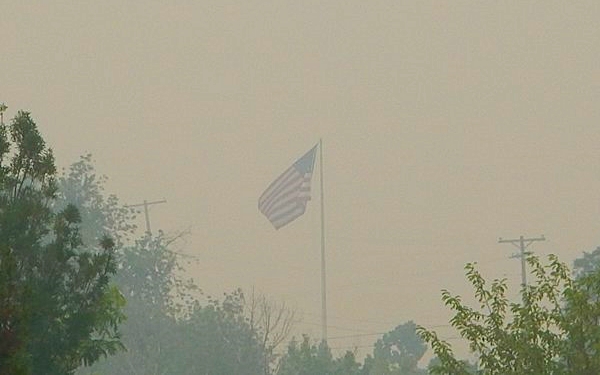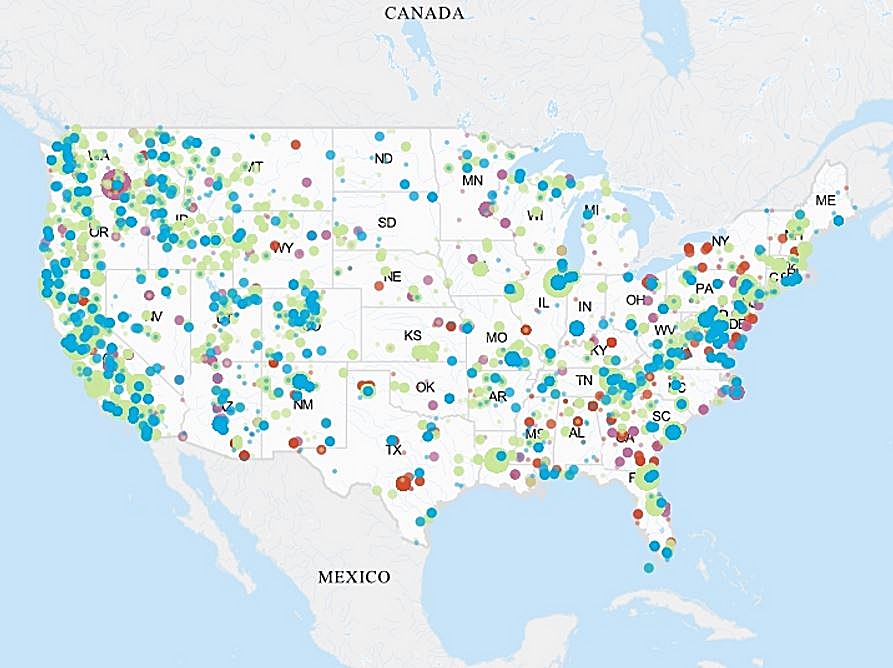During Hannon’s cross examination of Hostetler, he cited testing that was done by Plateau Environmental Services of the air immediately next to the chicken house as well as 50 ft from the front of the facility. Hannon read from a list that included counts per cubic meter of bacteria and mold spores. Despite Hannon’s dramatic-sounding litany, Hostetler assured the jury that Plateau Environmental concluded that all counts were well within acceptable agricultural limits.
by Marjorie Haun
Susan Raymond, the complainant suing Edwin Hostetler, a chicken farmer whose operation is located near Hotchkiss, Colorado, has built her case on purported health problems caused by the ‘trespass’ of feathers, mold, and bacterial emissions onto her property from his egg-laying facility. After years of legal wrangling, Raymond’s ‘trespass’ lawsuit is being heard in District Court in Delta County by a jury of 8 locals. (Please see “Organic chicken farmer defends property rights in bizarre Colorado case.”)
On Wednesday, May 23, following several days of testimony in the case, Raymond was called by her attorney, Kevin Scott Hannon, to testify about supposed adverse affects to her respiratory functioning and stamina, as well as to her her hobby farm and veterinary practice located adjacent to Hostetler’s property. Hannon, whose Denver firm specializes in ‘environmental litigation’ first questioned Raymond about her background and years spent as a child on what is now her hobby farm. Raymond explained that her mother was an environmental toxicologist and her father was a pharmacist in Hotchkiss. After establishing her history of working with farm animals, Hannon went on to question Raymond about the environmental changes that occurred on the property after Hostetler’s organic, free-range chicken farm became operational in 2012.
Raymond asserted that a ‘white powder’ was carried from the egg-laying facility onto her property by ventilation fans and wind, which covered her fields as well as her home and the inside of her veterinary facility. Raymond apparently started taking video of ’emissions’ being blown from the ventilation fans at about the time the facility was first opened. Over time, Raymond took a total of 722 videos she believed would support her claims about the emissions. The prosecution also provided numerous photo exhibits to the jury showing fly jars full of flies and feathers stuck to various items belonging to Raymond, all of which she claimed were coming from Hostetler’s facility which is located some 1,000 feet from the edge of her farm. Raymond also testified that ‘strange mold’ found in hay harvested from her property was attributable to the airborne emissions. According to Raymond’s testimony, she has a history sensitivity to chickens, and had to begin wearing a surgical mask to protect herself from contaminants from the chicken farm. She also bemoaned that, due to the operation of the chicken farm, she could no longer enjoy sitting on her front porch, as she had done in the past.
Defense attorney, Brandon Jensen, whose practice is out of Cheyenne, Wyoming, then cross examined Raymond. His first line of questioning was related to whether or not Raymond was seeking damages for the supposed harm caused to her health and her farm and veterinary business. Raymond made it clear that she was not seeking damages for lost income, or any effects to her veterinary business. She testified that she was not seeking damages for moldy hay, lost business opportunities, or dead animals. In fact, the total damages of $2069 named in the lawsuit seem to be directly related to medical treatment for ‘asthma.’ Jensen then inquired as to why she was asking Hostetler to pay the $1200 bill for medical testing, when the tests revealed her pulmonary functioning to be normal.
Although Raymond made claims about ‘white dust,’ feathers, and flies on her property, the defense was able to get her to admit that she never had any of those purported contaminants tested. Raymond conceded that traffic on dirt roads, manure spreading, and other agricultural conditions can cause airborne ’emissions. She was also not able to provide video showing a ‘plume’ of contaminants from the chicken farm moving toward her property.
Following Raymond’s testimony, Edwin Hostetler, the patriarch of a close-knit Mennonite family, took the stand. Hostetler was easily able to refute many of Raymond’s claims. The defense showed pictures taken after the opening of the facility of hay bails harvested from Hostetler’s field which lies between the chicken house and Raymond’s property, that were mold-free and certified Organic. Hostetler also testified that he observed Raymond harvesting her own hay and “thought she may have bailed it too quick.” Debunking Raymond’s claims about flies, Hostetler said that he was required by law to monitor the presence of flies in the chicken house by hanging fly strips. He testified that he had found no flies and that it was impossible that Raymond’s fly problem was due to his facility. Hostetler was shown photos of what Raymond claimed were chicken down and chicken feathers in various places on her property. Without hesitation, the chicken farmer identified the purported chicken feathers as cotton from cottonwood trees and feathers from other species of birds.
Defense attorney Jensen showed a series of videos of the chicken house taken during the daytime which matched the dates of videos taken by Raymond from her property. The daytime videos showed no visible emissions coming from the chicken house. Hostetler testified that he often observed Raymond as she was taking video of his property. When asked what might account for the dramatic differences between videos obtained by the defense and those provided by Raymond, he explained that she would wait until late in the day, when the sun was at an acute angle to take her videos, and that the sharp angle of the light dramatically increased the visibility of any particulates in the air.
During Hannon’s cross examination of Hostetler, he cited testing that was done by Plateau Environmental Services of the air immediately next to the chicken house as well as 50 ft from the front of the facility. Hannon read from a list that included counts per cubic meter of bacteria and mold spores. Despite Hannon’s dramatic-sounding litany, Hostetler assured the jury that Plateau Environmental concluded that all counts were well within acceptable agricultural limits. He also pointed out that bacteria and mold spore counts were significantly higher at the point of emission than they were 50 feet from the front of the chicken house, and that by extrapolating out the numbers, virtually no particulates would have reached Raymond’s house, which is nearly 1500 feet from the point of emission at the back of the facility.
Hannon spent a good deal of his cross-examination of Hostetler questioning the farmer’s judgement related to the placement of his chicken house on his own property, and whether or not he had considered Raymond’s health in the process. The line of inquiry by the prosecution seemed to question whether or not Hostetler had the right to run Western Slope Layers on his own land, and use that property according to the best interests of himself and his family. Reinforcing the notion that Raymond’s health should have been the utmost consideration in Hosteler’s business decisions, Hannon also asked him numerous times why he had not approached Raymond to observe for himself the things she was complaining of on her property, including moldy hay and white powder. Hostetler indicated that he did not approach her or go on to her property after she began legal actions against him, because it was obvious that her feelings were adversarial and he would not have been welcome.
The trial of Raymond vs. Hostetler is scheduled to continue until next week, with concluding remarks taking place on May 31.
Free Range Report



